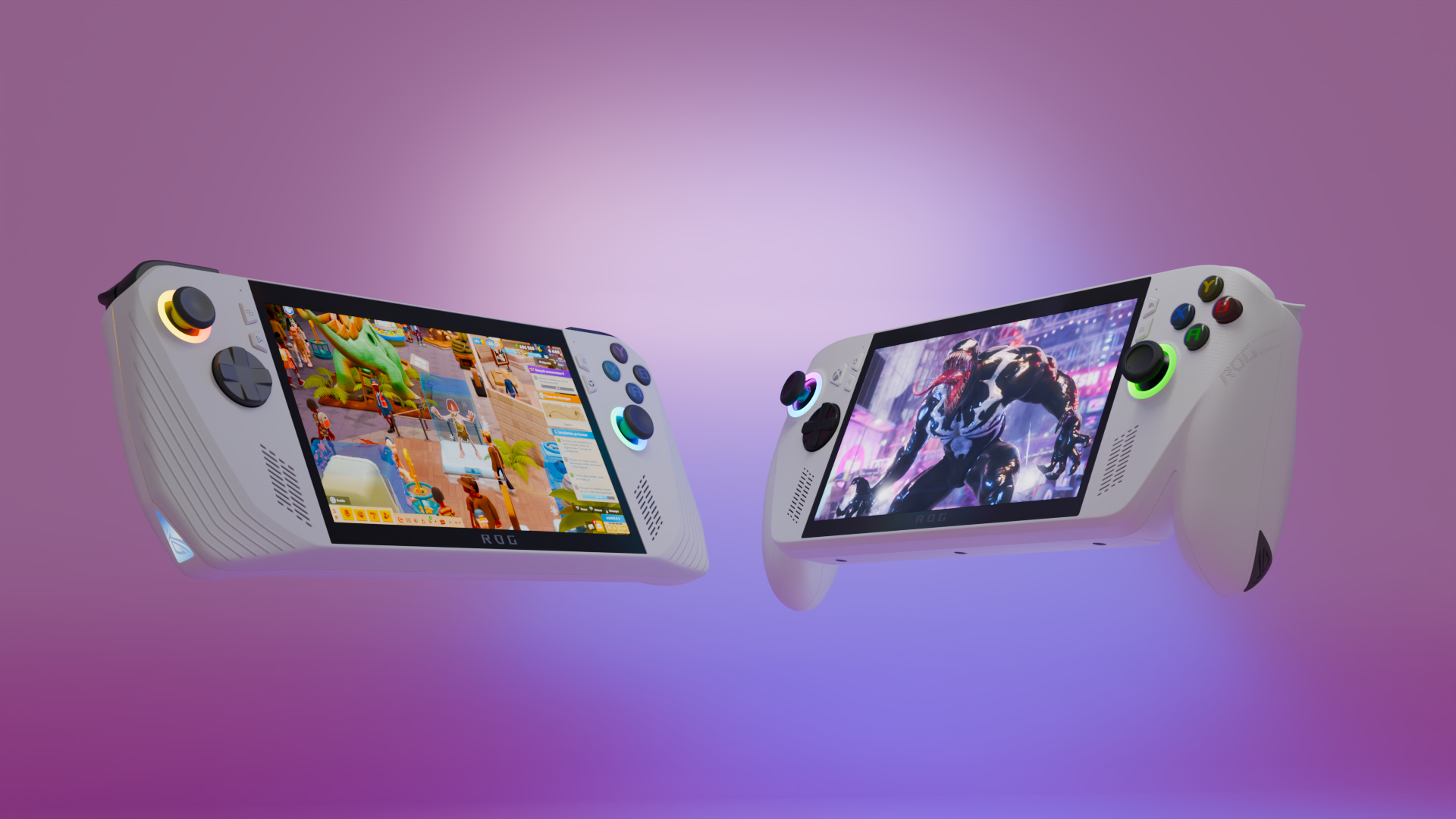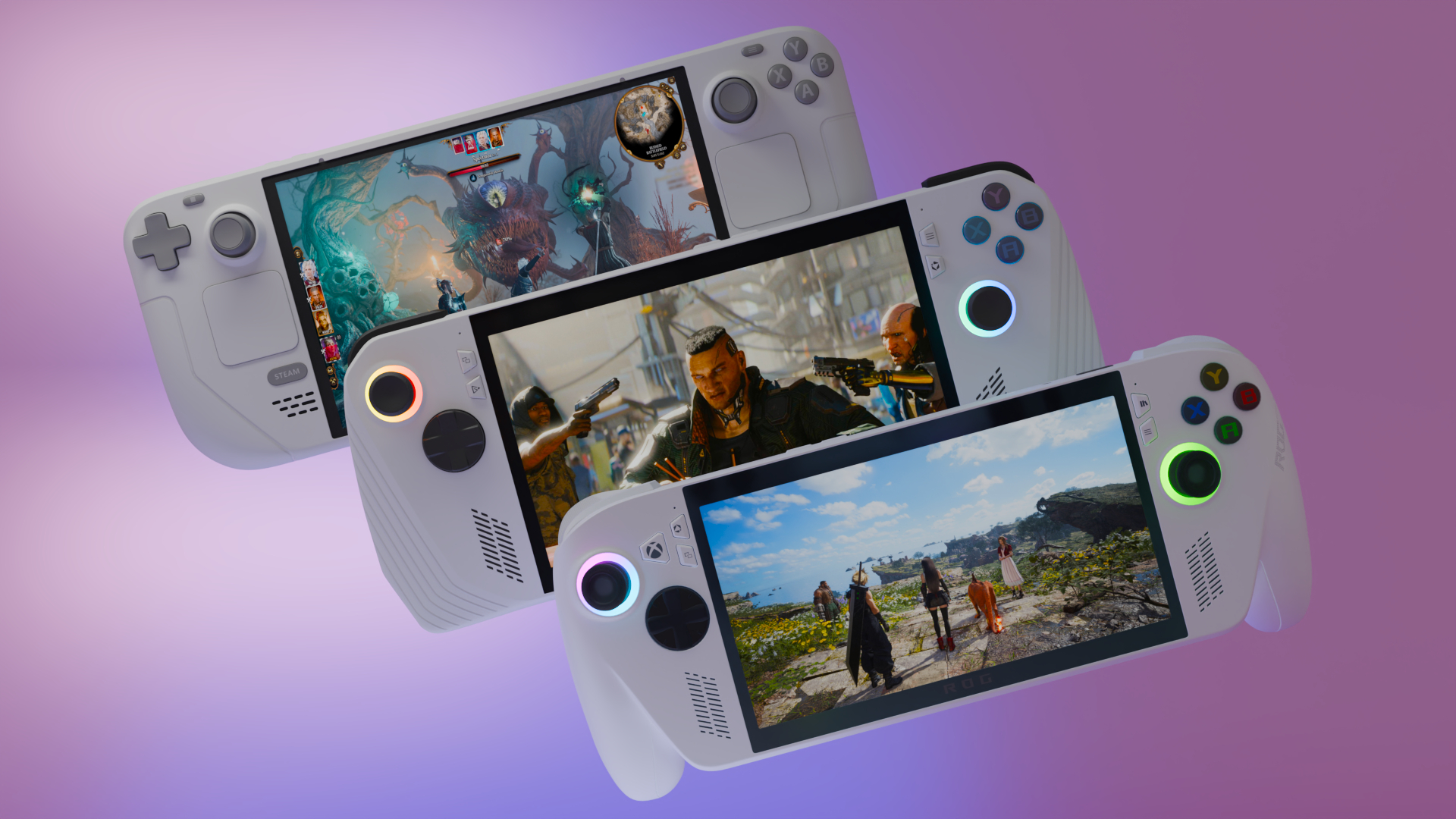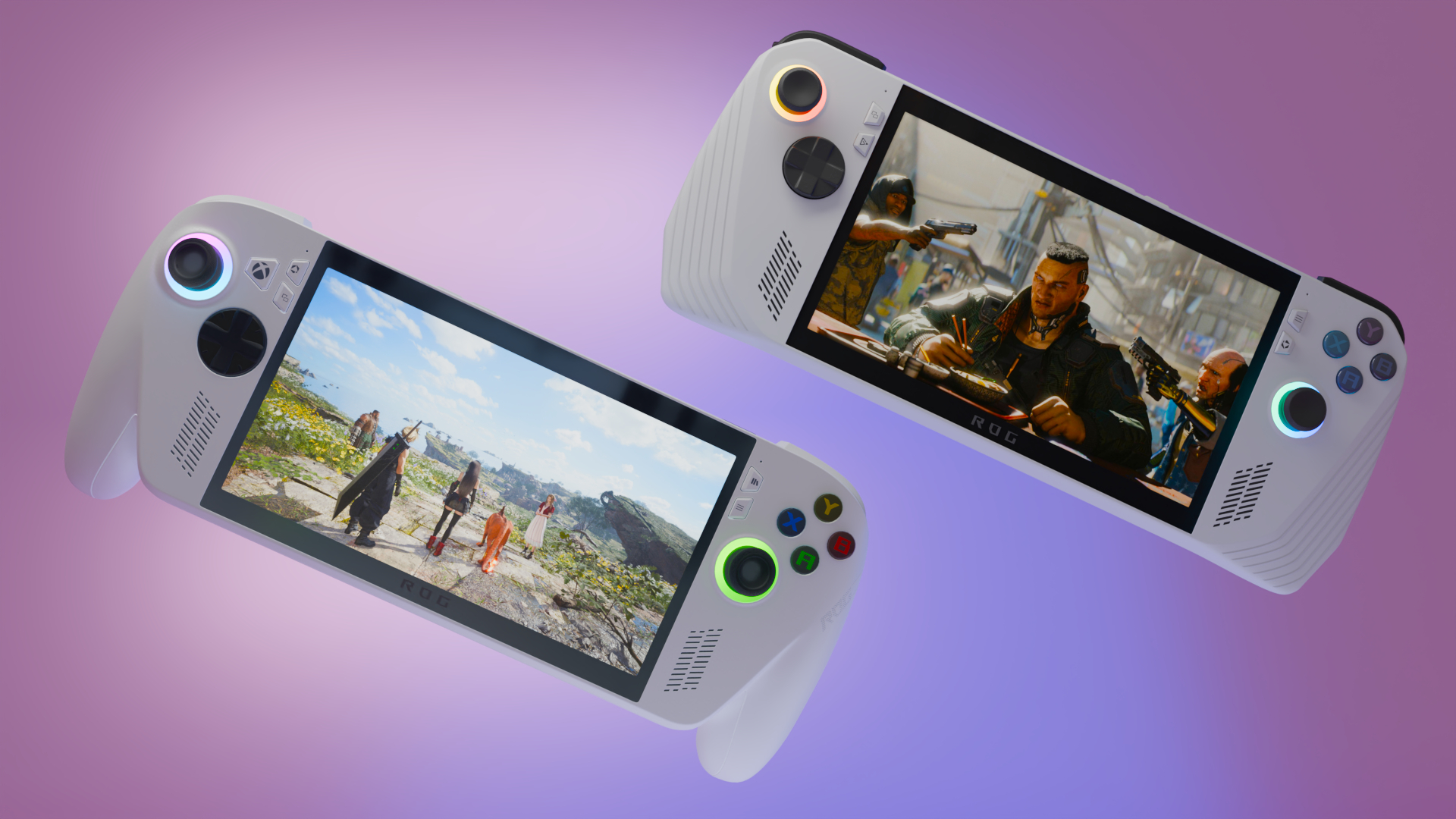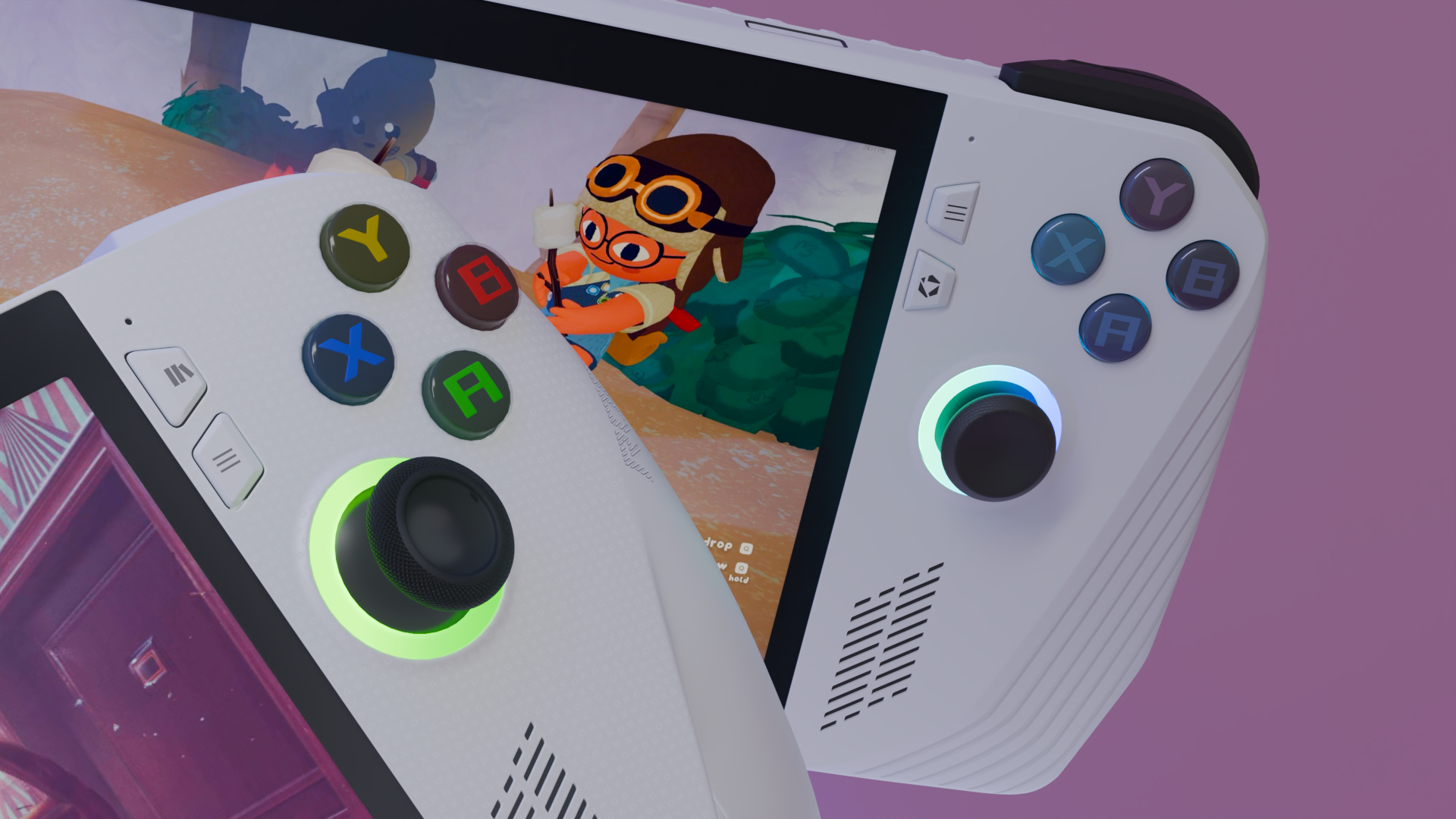Asus ROG Xbox Ally vs. ROG Ally: Bigger doesn't always mean better
Should you stick to the OG or go for the Xbox-branded version?

Not all gaming handhelds are created equal.
If they were, there would be little purpose in our identifying the best handheld gaming PCs.
Thanks to Microsoft, we have two additional handheld gaming PCs arriving later this year. And the two highly anticipated Xbox handhelds are, actually, Asus ROG Ally handhelds with a twist.
We've already taken a look at whether you should go for the ROG Xbox Ally X or Asus ROG Ally X, so it's now time to take a look at the more affordable versions: The ROG Xbox Ally and the ROG Ally.
So, which should you be saving up for? The new ROG Xbox Ally or our old favorite ROG Ally? Or should you just go for Valve's Steam Deck OLED?
Asus ROG Xbox Ally vs Asus ROG Ally: Specs
| Header Cell - Column 0 | ROG Xbox Ally | ROG Ally | Steam Deck OLED |
|---|---|---|---|
CPU: | AMD Ryzen Z2 A (20W) | AMD Ryzen Z1 (30W) | AMD Ryzen Z1 Extreme (30W) | Custom AMD Zen 2 CPU (15W) |
RAM: | 16GB | 16GB | 16GB |
Storage: | 512GB | 512GB | 512GB - 1TB |
Display: | 7-inch, 1920 x 1080, 120Hz, IPS panel | 7-inch, 1920 x 1080, 120Hz, IPS panel | 7-inch, 1280 x 800, 90Hz OLED |
Battery: | 60 Whr | 40 Whr | 50 Whr |
Asus ROG Xbox Ally vs Asus ROG Ally: Pricing and configurations

Microsoft hasn't yet released the pricing on the Asus ROG Xbox Ally or the Xbox Ally X. But there will be just one configuration of the Xbox Ally, featuring an AMD Ryzen Z2 A processor, 16GB of RAM, a 512GB SSD, a 7-inch, 1920 x 1080, 120Hz IPS display, and a 60 watt-hour battery.
The Asus ROG Ally is available in two price variations, featuring either AMD's Ryzen Z1 or Ryzen Z1 Extreme chipset. Both variations come with 16GB of RAM, a 512GB SSD, 7-inch, 1920 x 1080, 120Hz IPS display, and a 40 watt-hour battery. The Ryzen Z1 version is just $499, while the Z1 Extreme edition is $649.
Sign up to receive The Snapshot, a free special dispatch from Laptop Mag, in your inbox.
If you're wondering which ROG Ally is the best choice, we've done a rundown of the two models' strengths and weaknesses, and found that the Z1 Ally is often the better bargain.
For context, the Steam Deck OLED starts at $549 and comes with a custom 6nm Zen 2 AMD APU, 16GB of RAM, a 512GB SSD, and a 7-inch, 1280 x 800, 90Hz OLED display, plus a 50-watt-hour battery. You can upgrade your Steam Deck OLED storage to 1TB for an additional $100.
Asus ROG Xbox Ally vs Asus ROG Ally: Design and comfort

Look, the Asus ROG Ally looks incredibly cool. It features a sleek white aluminum chassis with RGB lighting on the joysticks. If you imagined an ROG Zephyrus laptop in handheld form, you'd get the original ROG Ally design.
Unfortunately, that also means its sharp angles and flat profile can make it rather uncomfortable to hold onto for long periods of time. Users have reported pain and numbness in their hands or fingers after long gaming sessions with the Ally, thanks to its unconventional design.
Asus took that into account when redesigning the chassis for the Ally X, which has a rounder design and thicker hand grips. For the ROG Xbox Ally, Asus went the extra mile and seems to have grafted standard Xbox controller handgrips onto the bottom of the Xbox Ally.
This looks a little lame in comparison to the classic Ally, but it also appears to be a lot more comfortable. The Xbox Ally retains the RGB ring around the joysticks and features the same angled, front-facing vents. It's mostly the grip that's changed between the two handhelds in terms of design. And while I don't love the aesthetics of the Xbox Ally, I'd have to say comfort matters more when gaming than pure looks.
Asus ROG Xbox Ally vs Asus ROG Ally: Performance and battery life

The ROG Ally with the Ryzen Z1 Extreme is the most powerful of the Ally handhelds, with an 8-core Zen 4 CPU. The ROG Ally Z1 model was a little less powerful with its 6-core Zen 4 CPU. Both ROG Ally handhelds operate at the same 30-watt max power threshold.
The ROG Xbox Ally will likely underperform both, as its Ryzen Z2 A CPU features just 4-cores of AMD's Zen 2 architecture, and operates at a TDP of 20-watts. It's a slightly more powerful variant of the Steam Deck's custom Zen 2 Van Goh APU.
The Steam Deck circumvents its hardware limitations by only offering a max resolution of 800p, while the Xbox Ally has a full 1080p display. So the extra 5-watts of power are likely necessary to keep the Xbox Ally at about 30fps in most games.
As for battery life, well. None of the AMD-powered handhelds have been super power-efficient. Our recommendation for the gaming handheld with the best battery life is the MSI Claw 8 AI+ for good reason.
One of the biggest flaws of the ROG Ally was its battery life. Particularly with the Ryzen Z1 Extreme model, but neither handheld lasted very long when gaming. The ROG Ally Z1 achieved a total of 1 hour and 46 minutes on the PCMark 10 Gaming battery test, while the Z1 Extreme managed 1 hour and 43 minutes.
This is largely due to the Ally's 30W TDP power profile compared to its small 40-watt-hour battery.
The ROG Xbox Ally operates at a lower 20W power profile and features a larger 60-watt-hour battery, which should result in longer battery life compared to either of the ROG Ally models. However, that extended battery life will come at the expense of performance.
Outlook

If you want a gaming handheld that's comfortable and can last through long unplugged gaming sessions, the Asus ROG Xbox Ally is likely the better choice. Especially if you're willing to take a performance hit in favor of battery life and comfort.
If you want the more powerful Ally handheld, the OG Ally is the way to go. And it's been out long enough now there are some tips and tricks to keep you hands from going completely numb on you after a few hours of gaming.
Unfortunately, we don't know the price of the ROG Xbox Ally, so we can't say which is the better bargain. We should know more about the Xbox handheld pricing as we get closer to the expected October launch date.
However, if you've got the cash to spare and you want a more powerful handheld, you might be better off opting for the Asus Xbox Ally X or the ROG Ally X.
More from Laptop Mag
- The Switch 2's display is so slow, it hertz — here's the problem
- Netflix Gaming stole my heart, and now it's breaking it
- Sony is fighting like cats and dogs against a small game developer from Hong Kong

A former lab gremlin for Tom's Guide, Laptop Mag, Tom's Hardware, and TechRadar; Madeline has escaped the labs to join Laptop Mag as a Staff Writer. With over a decade of experience writing about tech and gaming, she may actually know a thing or two. Sometimes. When she isn't writing about the latest laptops and AI software, Madeline likes to throw herself into the ocean as a PADI scuba diving instructor and underwater photography enthusiast.
You must confirm your public display name before commenting
Please logout and then login again, you will then be prompted to enter your display name.
